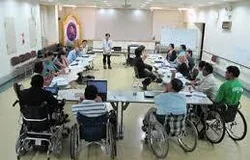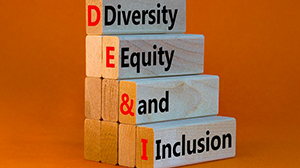Daniel Davidson, MD, MBA, DBA, PHD
Introduction:
Charities and foundations provide a helping hand to individuals facing poverty and tragedy, acting as rays of hope in a society characterized by economic inequality and unanticipated adversity. These organizations are essential in helping communities and individuals facing hardship by providing anything from healthcare services to educational opportunities and basic necessities. We explore the various ways that charities and foundations help the unfortunate, build resilience, and provide hope for a better future in this article.
Addressing Basic Needs:
In order for people to live healthy, respectable lives, basic requirements must be met. This is referred to as providing basic resources and services. Fundamental necessities like food, shelter, clothes, and medical care are usually included in these demands.
Efforts and programs that guarantee disadvantaged people and communities have access to these necessities are carried out by charities and foundations, which are vital in meeting fundamental requirements. To help those in need of nourishing meals, they might, for instance, arrange food drives; run homeless shelters to provide short-term lodging for those without a place to live; and give out donated clothing to those who would otherwise go without.
Charities and foundations work to alleviate immediate suffering, promote dignity, and enhance the general well-being of individuals and families facing difficulty by providing for their basic needs. In order to achieve greater social and economic empowerment, this fundamental assistance is essential since it allows people to seek chances for career advancement, education, and long-term self-sufficiency.
Providing Access to Education:
“Providing Access to Education” refers to the work that foundations and charities do to make sure that everyone, especially those from underprivileged circumstances, has the chance to get high-quality education. This entails removing obstacles that can keep people from utilizing educational opportunities and resources, such as lack of funding, inadequate infrastructure, and social injustices.
There are several ways that charities and organizations can help with education access:
Scholarships & Financial Aid:
Students who exhibit financial need or academic merit are eligible to apply for scholarships, grants, and financial aid from a variety of charity organizations. Tuition, school materials, travel expenses, and other educational costs are covered by these monies.
Building Infrastructure and Schools:
In underprivileged areas, certain foundations make investments in the construction of classrooms, schools, libraries, and other educational institutions. They guarantee that students have access to necessary resources and foster learning environments by making improvements to the infrastructure.
Teacher Training and Development:
To improve their abilities and pedagogies, educators can take use of professional development opportunities offered by charities and organizations. They support student achievement and raise the standard of education by investing in instructors.
Encouraging Literacy and lifetime Learning:
To encourage lifetime learning and skill development among people of all ages, foundations may fund literacy projects, adult education programs, and vocational training courses. These initiatives enable people to further their education, learn new skills, and increase their work opportunities.
Technology Integration:
In order to support digital learning, charitable organizations may give people access to computers, internet connectivity, and instructional software. They close the digital divide and guarantee that students have access to cutting-edge teaching resources and instruments by embracing technology.
Offering Healthcare Services:
In the context of charities and foundations, “offering healthcare services” means giving medical attention, treatment, and assistance to those who might not otherwise have access to sufficient healthcare resources because of financial limitations, geographic restrictions, or other impediments.
Medical Clinics:
In underprivileged regions, such as rural or urban districts with restricted access to healthcare facilities, charities and foundations may found or finance medical clinics. In addition to treating acute and chronic illnesses, providing basic medical procedures, immunizations, and preventive screenings, these clinics provide a variety of primary care services.
The availability of medications is a major concern for several people who are struggling financially to pay for the necessary drugs that are required to treat their ailments. By working with pharmaceutical firms, donating drugs, or offering assistance to individuals in need to pay for their prescriptions, charities and organizations can give people access to free or significantly reduced medications.
Preventive healthcare services:
Retaining good health and delaying the emergence of chronic illnesses are largely dependent on prevention. Foundations and charities may provide testing for common medical problems like diabetes and hypertension, vaccines, and health education programs that support healthy lifestyle choices and disease preventive techniques.
Specialist Care and Treatments:
For people with complex medical needs, charities and foundations may fund specialist healthcare services and treatments in addition to primary care. This can entail having access to ongoing medical care for chronic illnesses, diagnostic testing, surgery, specialty consultations, and rehabilitation programs.
Empowering Economic Empowerment:
“Empowering Economic Empowerment” describes the activity of giving people and communities the tools, information, and chances they need to become financially stable, prosperous, and independent. This idea acknowledges that achieving economic empowerment is crucial for people to end the cycle of poverty, get beyond obstacles to upward social mobility, and reach their full potential.
Giving people the knowledge, resources, and encouragement they need to take charge of their own futures is the goal of empowering economic empowerment through a variety of programs and tactics. These could consist of:
Job Training and Skills Development:
Giving people access to workshops, skill-building programs, and vocational training programs so they can acquire the knowledge and abilities required to find job or launch their own enterprises.
Microfinance and Capital Access:
Enabling people who don’t have access to regular banking systems to obtain financial services like microloans, savings accounts, and credit facilities. This makes it possible for people to invest in ventures that generate revenue, grow their companies, and accumulate wealth over time.
Entrepreneurship Support:
Providing aspiring business owners with advice, tools, and mentorship to help them launch and expand their enterprises. These could include programs for entrepreneurship training, startup accelerators, and company incubators that promote innovation and business growth.
Market Access and Networking Opportunities:
Enabling small company owners and entrepreneurs to establish connections with suppliers, investors, markets, and other relevant parties in order to support the growth and expansion of their enterprises. To assist entrepreneurs in gaining access to new prospects and resources, this may entail organizing trade shows, networking events, and market connections.
Financial literacy and education:
Educating and training people in budgeting, saves, investing, and money management techniques to enable them to make wise financial decisions and create long-term financial security.
Fostering Community Development:
Assisting and enabling local communities to recognize their goals, needs, and resources while collaborating to achieve long-term fixes and constructive change is the essence of promoting community development. In order to improve a community’s social, economic, and environmental well-being, it includes a variety of programs and projects.
Following is an explanation of some essential elements of encouraging community development:
Empowerment:
Community development stems from the ideas of empowerment, which include giving people and organizations in a community the ability to take charge of their own lives and make decisions that have an impact on them. Empowerment entails giving community people the tools, training, and assistance they need to take an active role in development.
Building Capacity:
Increasing the talents, know-how, and skills of people and organizations in the community is a common goal of development initiatives focused on capacity building. Programs for developing leadership, communication, problem-solving, and organizational management abilities may fall under this category, as well as workshops and skill-focused exercises.
Asset-Based strategy:
Community development employs an asset-based strategy, which looks to highlight and expand upon the community’s current assets, strengths, and resources rather than concentrating only on its needs and shortcomings. With this approach, communities are acknowledged as having important resources that may be used to drive positive change, such as social capital, cultural legacy, natural resources, and human capital.
Collaborative Decision-Making:
Community development places a strong emphasis on the value of inclusive and democratic decision-making procedures that incorporate all community members. Residents, community leaders, public servants, companies, nonprofits, and other important stakeholders may collaborate to establish objectives, prioritize issues, and create action plans that take into account the many needs and viewpoints of the community.
Holistic Development:
A holistic approach to community development acknowledges the interdependence of social, economic, and environmental elements that influence a community’s well-being. It aims to address various aspects of development in a coordinated and integrated way, such as social cohesion, economic opportunity, housing, healthcare, and education.
Sustainability:
A key component of community development is sustainable development which emphasizes the significance of addressing current demands without sacrificing the capacity of future generations to address their own. This entails putting into practice plans and programs that are long-term economically feasible, socially inclusive, and environmentally sustainable.
Conclusion:
Charities and foundations provide compassion, assistance, and opportunities to those in need, acting as lifelines for the unfortunate and impoverished in an uncertain and unequal society. These organizations uphold human dignity and social justice with unflinching dedication, exemplifying the fundamental meaning of philanthropy and inspiring hope for a more just and compassionate society. As we consider their priceless achievements, let us once again pledge to support their essential mission and collaborate to build a more promising and inclusive future for everybody.







